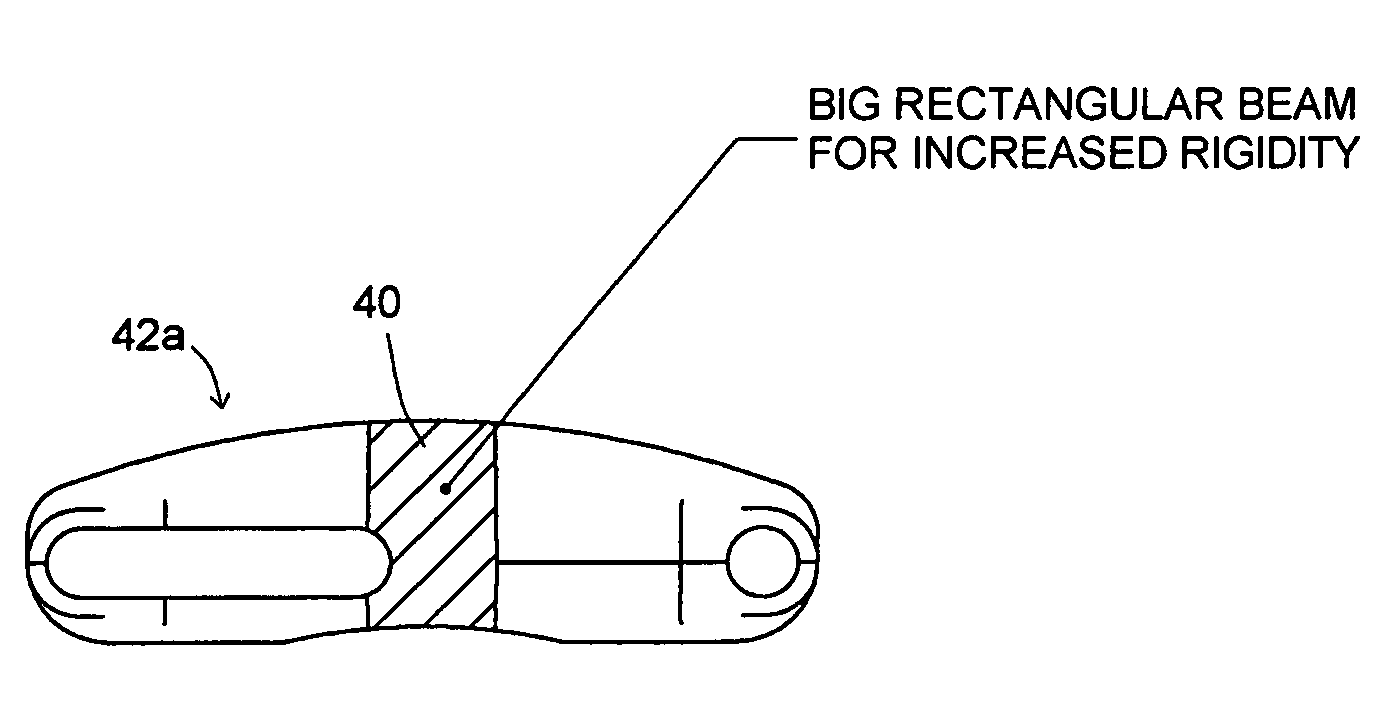Modular plastic conveyor belt for spiral conversion
a conveyor belt and module technology, applied in the direction of conveyors, rollerways, transportation and packaging, etc., can solve the problems of inability to carry defined loads, and achieve the effects of increasing spanning strength, reducing the distance of protruding outwardly, and increasing depth
- Summary
- Abstract
- Description
- Claims
- Application Information
AI Technical Summary
Benefits of technology
Problems solved by technology
Method used
Image
Examples
Embodiment Construction
[0023]In the drawings, the perspective view of FIG. 1 schematically illustrates a spiral conveyor system 10 in which a conveyor belt 11 travels in a helical path through a series of tiers 12 in a driving tower 14. The conveyor 12 normally rises through the helix defined by the driving tower, exits off the upper end of the tower at 16 and passes over a series of rollers 18, 20, 22, 24, 26, 28, etc. as schematically shown in the drawing, ultimately to be fed back into the bottom of the helical path of the conveyor tower at 30.
[0024]As is well known, a spiral conveyor system normally has a support frame 32 which includes a series of columns 34 around the circumference of the conveyor belt, and these have inwardly-extending cantilevered beams or bars 36, some of which are indicated in the schematic view of FIG. 1. These, in the typical steel spiral conveyor belt system, support two or sometimes three tracks that follow the helical path to support the width of the belt 11. These tracks (...
PUM
 Login to View More
Login to View More Abstract
Description
Claims
Application Information
 Login to View More
Login to View More - R&D
- Intellectual Property
- Life Sciences
- Materials
- Tech Scout
- Unparalleled Data Quality
- Higher Quality Content
- 60% Fewer Hallucinations
Browse by: Latest US Patents, China's latest patents, Technical Efficacy Thesaurus, Application Domain, Technology Topic, Popular Technical Reports.
© 2025 PatSnap. All rights reserved.Legal|Privacy policy|Modern Slavery Act Transparency Statement|Sitemap|About US| Contact US: help@patsnap.com



